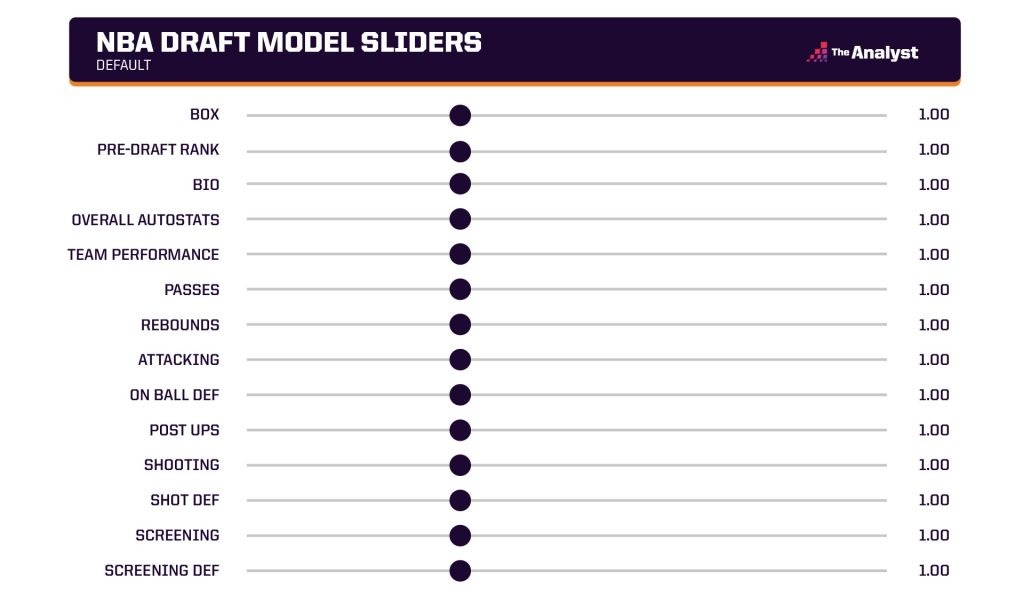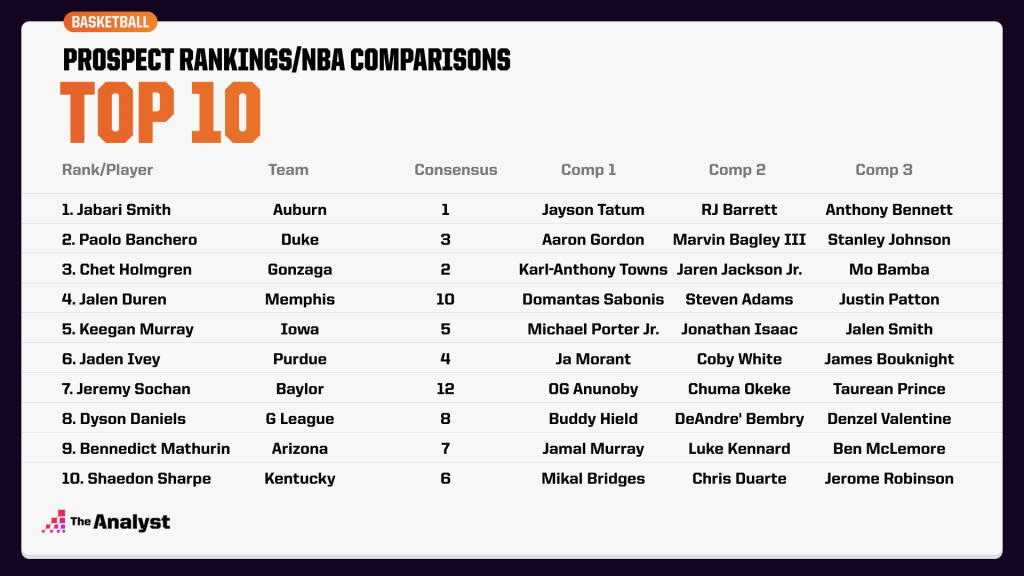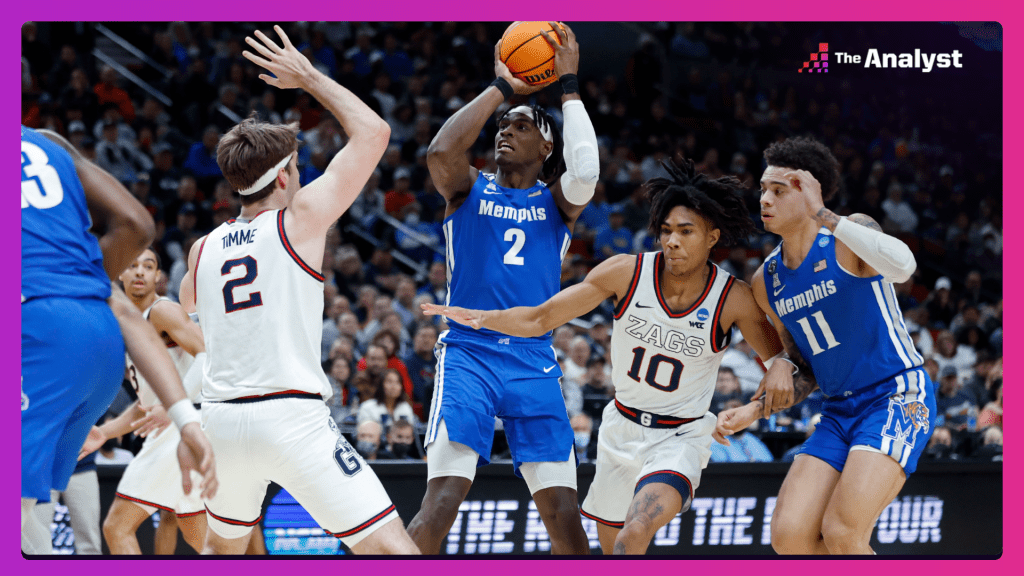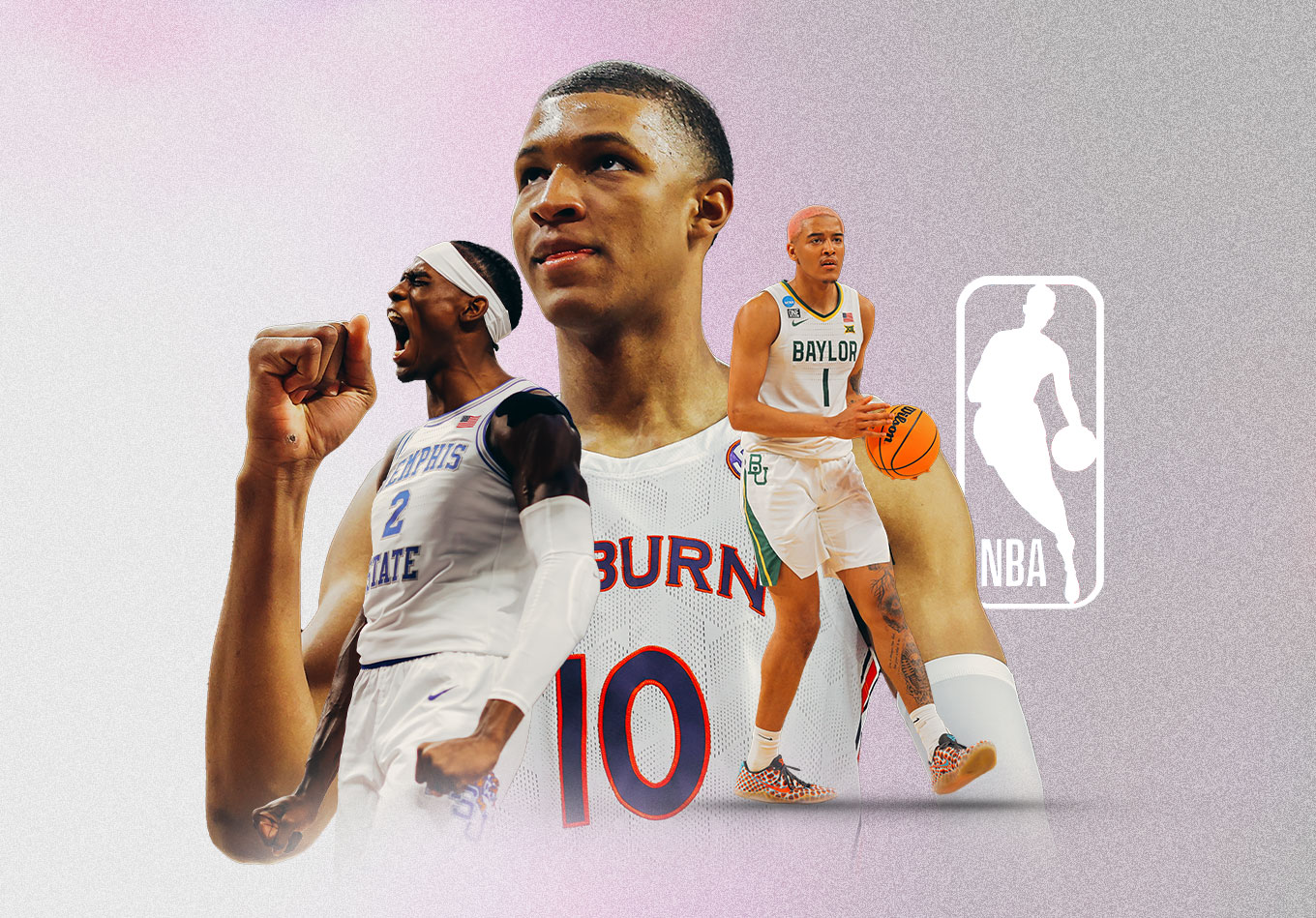By now, those waiting anxiously for the Orlando Magic to begin the fun Thursday night have likely viewed countless NBA mock drafts that are now simply blurring together.
They’ve also read most, if not all, of the NBA player comparisons. NBAdraftroom.com lists Rashard Lewis, Kevin Garnett and Jaren Jackson Jr. as Jabari Smith’s comparisons. The Sporting News equated Paolo Banchero’s game to that of John Collins and Julius Randle. And ESPN says Chet Holmgren lacks a great comp.
But those are just opinions. What would happen if we could use various levels and types of player data to determine rankings and comparisons for this year’s NBA Draft picks?
Well, we can using our NBA Draft model, which is derived from an array of volume- and rate-based statistical inputs, consensus draft rankings and biographical/anthropometric information to determine where a prospect stands relative to his peers in the class.
It’s the same model that in 2019 listed Blake Griffin, Jabari Parker and DeMarcus Cousins among the comps for Zion Williamson, who was very likely the most hyped prospect on draft night since LeBron James in 2003. All three high first-round picks had battled injuries throughout much of their careers, and Zion has played a total of 85 games in three seasons with the New Orleans Pelicans.
Now, the model also includes data from AutoStats, which leverages AI-enhanced body recognition technology to identify player position and movement across the entirety of the court. And the model’s sliders (see below) can be used to emphasize certain physical and statistical traits if you so choose.
We focused on shooting, on-ball defense, and bio data in search of two-way wings and used our sliders to examine how two general managers’ evaluations might change depending on which traits they value earlier. But for our purposes of finding overall rankings and player comparisons, we’re going with default sliders that weigh everything about the same.

The bio data includes basic physical traits such as height, weight and wingspan. This allows us to compare players physically and statistically.
We also have the ability to set the DRIP (a projection of a player’s contribution to a team’s plus-minus per 100 possessions) from Year 1 to Year 6, depending on what point in the development process you want to forecast. Here, we’re looking at the highest DRIP heading into Year 4 of their NBA careers.
And while it’s important to reiterate that the model’s NBA comparisons are meant to be at the time those players were coming out of college, it does open the imagination to potential projections.
Here’s a look at our model’s 10 best prospects for the 2022 NBA Draft, along with three NBA player comps:
- Comp 1: High-end comp
- Comp 2: Somewhere in the middle
- Comp 3: Lower-end comp

In case you’re wondering, Tari Eason from LSU, Mark Williams out of Duke, Kentucky product TyTy Washington Jr., Duke’s AJ Griffin – a consensus top-10 pick – and Johnny Davis out of Wisconsin come in at 11-15 in the rankings.
And while the consensus has Chet Holmgren as the No. 2 overall prospect, our model ranks Banchero ahead of the Gonzaga big man. The biggest difference appears to be on the offensive end, where Paolo Banchero ranks fifth in offensive DRIP (O-DRIP) compared to Holmgren at No. 10. Holmgren is second overall in D-DRIP, while Banchero is sixth.
With our model spitting out NBA player comparisons like Ja Morant of the Memphis Grizzlies, Darius Garland of the Cleveland Cavaliers, Anthony Edwards of the Minnesota Timberwolves and De’Aaron Fox of the Sacramento Kings, it’s no wonder that there are rumors swirling about the Oklahoma City Thunder shocking the world and taking Jaden Ivey second overall.
Morant averaged 24.5 points and 10.0 assists while shooting 36.3% from 3-point range as a sophomore at Murray State after putting up just 12.7 points and 6.3 assists per game while hitting 30.7% from beyond the arc in his first season. Ivey averaged 17.3 points and 3.1 assists while shooting 35.8% from 3 as a sophomore at Purdue after putting up 11.1 points and 1.9 assists per game while hitting 25.8% from beyond the arc in his first season.
And both are known for their playmaking and ability to attack the rim at an elite level, though Ivey comes in with a little bit more solid of a frame (6-foot-4, 195 pounds) that could help him better withstand hard NBA contact. Morant has shot just 32.7% from 3 in the NBA, but he showed improvement by hitting at a career-high 34.4% in 2021-22. Whichever team drafts Ivey will hope to see a similar progression from the outside.
The biggest movers in the rankings are Jalen Duren our of Memphis, who soars ahead of Ivey and Iowa product Keegan Murray, and Baylor prospect Jeremy Sochan, who jumped in front of Bennedict Mathurin from Arizona, Dyson Daniels from the G League Ignite and Shaedon Sharpe out of Kentucky. Duren is the model’s fourth-ranked prospect, compared to 10th overall by the consensus. Sochan is seventh, up from his No. 12 consensus ranking.
So what does the model see in these guys?
Well, Duren ranks highly in many of the categories that fall under ’shooting’ in the sliders – like outshooting his expected field-goal percentage in various AutoStats buckets. That’s interesting because he only attempted one 3-point field goal while shooting 59.7% from the field in his only season with the Tigers.

Does he have the potential to extend that range? If he does, he could play out more like the comparison to Domantas Sabonis, who has averaged 0.7 made 3s per game over the past two seasons. Otherwise, he probably trends more in the Steven Adams direction (one 3-point field goal made in 664 career games).
The 6-foot-11 big man also measures out well in secondary assist percentage, which makes sense considering his Sabonis comp. It also bodes well as he enters a league that seems to be valuing the passing ability of its bigs at an increasing rate.
In the case of Sochan, it appears to be all about his potential on the defensive end. The 6-foot-9 former Bear ranks first among draft prospects in field-goal percentage allowed in a bunch of different shooting categories and the AutoStats data also tells us he’s been a shut-down defender in isolation situations.
Sochan also rebounds well, so it makes sense that players like OG Anunoby of the Toronto Raptors and Chuma Okeke of the Magic come up as his NBA player comps. Both were known for their physical tools and defensive potential coming out of Indiana and Auburn, respectively.
Sochan’s shot is a work in progress, but if he can eventually shoot 37.2% from 3 (Anunoby’s career percentage) and average 17.1 points (Anunoby’s 2021-22 average) while playing above-average defense, the team that drafts him will be ecstatic.
Data modeling provided by Matt Scott of Stats Perform. Graphic design by Matt Sisneros.
Enjoy this? Subscribe to our mailing list to receive exclusive weekly content.
